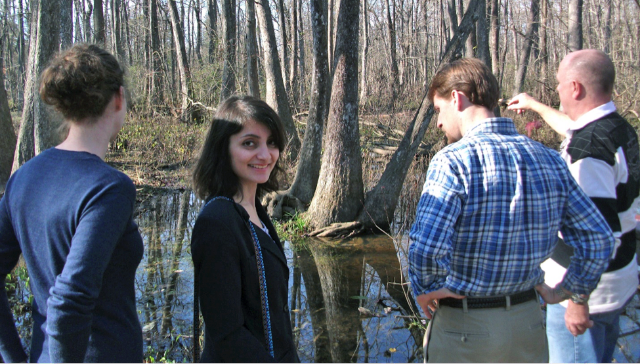When most people go to Laos, they tend to visit Luang Prabang only. However, Pakse is also worth a visit. It is the capital city of Champasak province in Southern Laos. The city was founded by the French in 1905 when Laos was part of French Indochina. Some buildings like the Chinese society building still remain from the colonial era.
I visited the city for work, as we were supporting the city to develop a sustainable water and wastewater plan thre. The reason is because the city is growing rapidly and is the second largest after the capital Vientiane. It also shares a bridge with Thailand, over the Mekong river, which is worth a visit as well.
Since the downtown Pakse area is small, most of it can be explored on foot. Alternatively, a tuk tuk or samlor will cost around 5,000 to 10,000 Kip per person in the downtown area depending on the number of passengers and distance. A private taxi to a destination outside of town can be booked at travel agent or hotel.
There are a number of temples in Pakse, some old, some new, but one that is really worth seeing is the Wat Phou temple. It is an ancient Khmer temple that resembles Angkor Wat. The temple is from the 10th century, and located 40 kilometers South of Pakse. The temple is of Khmer architecture and Hindu religion and is situated at the foot of a hill.
Getting to the temple is a tad bit complicated. You'd need to hire a motor which is the best option. We had a van hire but split among many, so it came down to 20,000 kip.The temple ticket includes entrance to a museum (which we skipped). The temple and site is open from 8:00am - 5:00pm while the museum is open till 4:30pm. An entrance ticket costs foreigners: 50,000 kips (approx $6) and the ticket is valid for a whole day.
If you happen to go in March, you can also experience a Buddhist festival at Wat Phou, held during the full moon of the third lunar month. The ticket includes a ride by golf kart to the entrance gate of the temple, less than 1 kilometer away.
If you happen to go in March, you can also experience a Buddhist festival at Wat Phou, held during the full moon of the third lunar month. The ticket includes a ride by golf kart to the entrance gate of the temple, less than 1 kilometer away.
The Vat Phou Temple is a remarkably well-preserved planned landscape, more than 1,000 years old. It was shaped to express the Hindu vision of the relationship between nature and humanity, using an axis from mountain top to river bank to lay out a geometric pattern of temples, shrines and waterworks extending over some 10 km. Two planned cities on the banks of the Mekong River are also part of the site, as well as Phou Kao mountain. The whole represents a development ranging from the 5th to 15th centuries, mainly associated with the Khmer Empire. The summit, Phou Kao is identified in ancient times with the linga, the phallic symbol of Shiva, from which originated its ancient name, Lingaparvata, and its reputation as a sacred hill. At the base are some structures, and then there is a processional walkway that leads to a stairway lined with trees.
At the top is a main sanctuary that was dedicated to Shiva. Inscriptions from to the 5th and 6th centuries mention such a sanctuary that is built on the mountain, during the same period as the foundation of the city. The original sanctuary has been replaced by the religious complex we see today.
This complex was built during the first part of the 11th century, with some additions and reconstructions from the 12th and 13th centuries.
The sanctuary is located on a terrace at the foot of the cliff where the sacred spring flows. The permanent spring, at the foot of the cliffs, is probably one of the main reasons that induced the ancient rulers of the area to establish a shivaist sanctuary at this location.
Associated with this religious complex, in the plain below, on the banks of the Mekong, is a pre-angkorian city, the remains of which (large earthen enclosure walls, brick monuments) are barely visible on the ground, although they appear quite clearly on aerial pictures.







0 comments